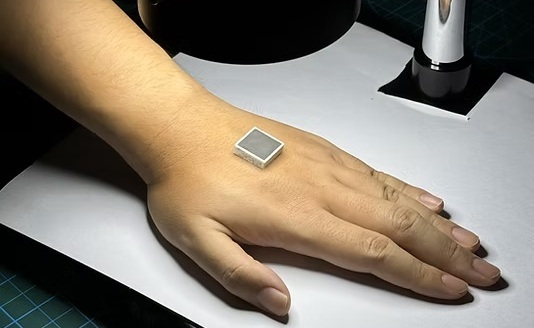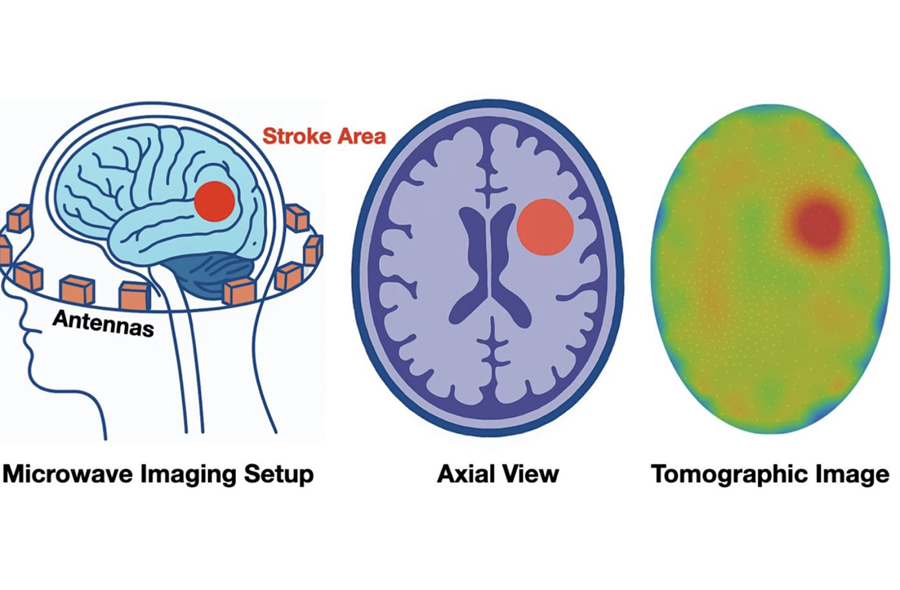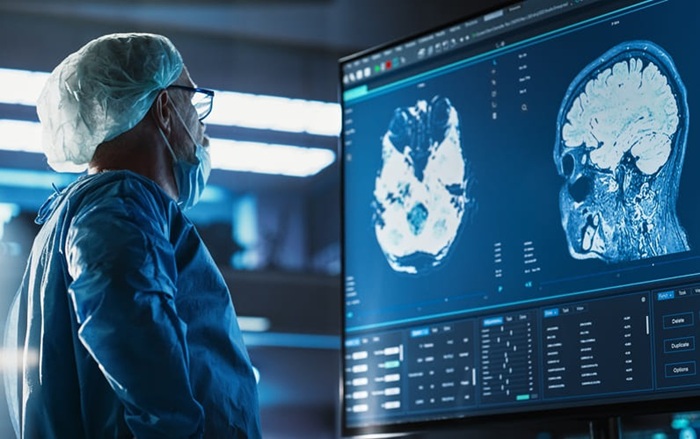Siemens Launches LUMINOS Lotus Max Fluoroscopy/Radiography System at RSNA 2020
|
By MedImaging International staff writers Posted on 30 Nov 2020 |

Image: LUMINOS Lotus Max (Photo courtesy of Siemens Healthineers)
Siemens Healthineers (Erlangen, Germany) has introduced the LUMINOS Lotus Max, a premium 2-in-1 remote-controlled imaging system that seamlessly integrates fluoroscopy and radiography, at the virtual 106th Scientific Assembly and Annual Meeting of the Radiological Society of North America (RSNA).
Designed to be operated remotely from a control room, the LUMINOS Lotus Max also can be used tableside via an optional second remote control console. Either way, the LUMINOS Lotus Max offers a high degree of versatility in a wide range of clinical examinations and among diverse patient types. It combines radiographic and fluoroscopic imaging with orthopedic studies such as long-leg or full-spine examinations and basic interventions. Because these radiographic and fluoroscopic capabilities are highly integrated, users can quickly switch between the two forms of imaging. The LUMINOS Lotus Max also features a high level of automation for easy maneuvering at the touch of a button.
Options include a wireless footswitch for greater freedom in system operation and to potentially avoid unnecessary operator radiation dose; an Enhanced Care Package of software features to help minimize patient dose, improve workflow, and optimize image quality; and a multi-color MoodLight feature to create a warm, friendly working environment for patients and staff. The LUMINOS Lotus Max automatically encrypts all images and patient data. This encryption, combined with regular software updates and an elaborate role-based access control, helps ensure compliance with the highest cybersecurity standards.
“The LUMINOS Lotus Max features a high level of integration that overcomes challenges facing previous fluoroscopy/radiography systems to deliver efficient workflows and permit high system utilization for an uninterrupted flow in fluoroscopic and radiographic exams,” said Niral Patel, Vice President of X-ray Products at Siemens Healthineers North America.
Designed to be operated remotely from a control room, the LUMINOS Lotus Max also can be used tableside via an optional second remote control console. Either way, the LUMINOS Lotus Max offers a high degree of versatility in a wide range of clinical examinations and among diverse patient types. It combines radiographic and fluoroscopic imaging with orthopedic studies such as long-leg or full-spine examinations and basic interventions. Because these radiographic and fluoroscopic capabilities are highly integrated, users can quickly switch between the two forms of imaging. The LUMINOS Lotus Max also features a high level of automation for easy maneuvering at the touch of a button.
Options include a wireless footswitch for greater freedom in system operation and to potentially avoid unnecessary operator radiation dose; an Enhanced Care Package of software features to help minimize patient dose, improve workflow, and optimize image quality; and a multi-color MoodLight feature to create a warm, friendly working environment for patients and staff. The LUMINOS Lotus Max automatically encrypts all images and patient data. This encryption, combined with regular software updates and an elaborate role-based access control, helps ensure compliance with the highest cybersecurity standards.
“The LUMINOS Lotus Max features a high level of integration that overcomes challenges facing previous fluoroscopy/radiography systems to deliver efficient workflows and permit high system utilization for an uninterrupted flow in fluoroscopic and radiographic exams,” said Niral Patel, Vice President of X-ray Products at Siemens Healthineers North America.
Latest Radiography News
- AI Detects Early Signs of Aging from Chest X-Rays
- X-Ray Breakthrough Captures Three Image-Contrast Types in Single Shot
- AI Generates Future Knee X-Rays to Predict Osteoarthritis Progression Risk
- AI Algorithm Uses Mammograms to Accurately Predict Cardiovascular Risk in Women
- AI Hybrid Strategy Improves Mammogram Interpretation
- AI Technology Predicts Personalized Five-Year Risk of Developing Breast Cancer
- RSNA AI Challenge Models Can Independently Interpret Mammograms
- New Technique Combines X-Ray Imaging and Radar for Safer Cancer Diagnosis
- New AI Tool Helps Doctors Read Chest X‑Rays Better
- Wearable X-Ray Imaging Detecting Fabric to Provide On-The-Go Diagnostic Scanning
- AI Helps Radiologists Spot More Lesions in Mammograms
- AI Detects Fatty Liver Disease from Chest X-Rays
- AI Detects Hidden Heart Disease in Existing CT Chest Scans
- Ultra-Lightweight AI Model Runs Without GPU to Break Barriers in Lung Cancer Diagnosis
- AI Radiology Tool Identifies Life-Threatening Conditions in Milliseconds

- Machine Learning Algorithm Identifies Cardiovascular Risk from Routine Bone Density Scans
Channels
MRI
view channel
Novel Imaging Approach to Improve Treatment for Spinal Cord Injuries
Vascular dysfunction in the spinal cord contributes to multiple neurological conditions, including traumatic injuries and degenerative cervical myelopathy, where reduced blood flow can lead to progressive... Read more
AI-Assisted Model Enhances MRI Heart Scans
A cardiac MRI can reveal critical information about the heart’s function and any abnormalities, but traditional scans take 30 to 90 minutes and often suffer from poor image quality due to patient movement.... Read more
AI Model Outperforms Doctors at Identifying Patients Most At-Risk of Cardiac Arrest
Hypertrophic cardiomyopathy is one of the most common inherited heart conditions and a leading cause of sudden cardiac death in young individuals and athletes. While many patients live normal lives, some... Read moreUltrasound
view channel
Wearable Ultrasound Imaging System to Enable Real-Time Disease Monitoring
Chronic conditions such as hypertension and heart failure require close monitoring, yet today’s ultrasound imaging is largely confined to hospitals and short, episodic scans. This reactive model limits... Read more
Ultrasound Technique Visualizes Deep Blood Vessels in 3D Without Contrast Agents
Producing clear 3D images of deep blood vessels has long been difficult without relying on contrast agents, CT scans, or MRI. Standard ultrasound typically provides only 2D cross-sections, limiting clinicians’... Read moreNuclear Medicine
view channel
PET Imaging of Inflammation Predicts Recovery and Guides Therapy After Heart Attack
Acute myocardial infarction can trigger lasting heart damage, yet clinicians still lack reliable tools to identify which patients will regain function and which may develop heart failure.... Read more
Radiotheranostic Approach Detects, Kills and Reprograms Aggressive Cancers
Aggressive cancers such as osteosarcoma and glioblastoma often resist standard therapies, thrive in hostile tumor environments, and recur despite surgery, radiation, or chemotherapy. These tumors also... Read more
New Imaging Solution Improves Survival for Patients with Recurring Prostate Cancer
Detecting recurrent prostate cancer remains one of the most difficult challenges in oncology, as standard imaging methods such as bone scans and CT scans often fail to accurately locate small or early-stage tumors.... Read moreGeneral/Advanced Imaging
view channel
AI-Based Tool Accelerates Detection of Kidney Cancer
Diagnosing kidney cancer depends on computed tomography scans, often using contrast agents to reveal abnormalities in kidney structure. Tumors are not always searched for deliberately, as many scans are... Read more
New Algorithm Dramatically Speeds Up Stroke Detection Scans
When patients arrive at emergency rooms with stroke symptoms, clinicians must rapidly determine whether the cause is a blood clot or a brain bleed, as treatment decisions depend on this distinction.... Read moreImaging IT
view channel
New Google Cloud Medical Imaging Suite Makes Imaging Healthcare Data More Accessible
Medical imaging is a critical tool used to diagnose patients, and there are billions of medical images scanned globally each year. Imaging data accounts for about 90% of all healthcare data1 and, until... Read more
Global AI in Medical Diagnostics Market to Be Driven by Demand for Image Recognition in Radiology
The global artificial intelligence (AI) in medical diagnostics market is expanding with early disease detection being one of its key applications and image recognition becoming a compelling consumer proposition... Read moreIndustry News
view channel
GE HealthCare and NVIDIA Collaboration to Reimagine Diagnostic Imaging
GE HealthCare (Chicago, IL, USA) has entered into a collaboration with NVIDIA (Santa Clara, CA, USA), expanding the existing relationship between the two companies to focus on pioneering innovation in... Read more
Patient-Specific 3D-Printed Phantoms Transform CT Imaging
New research has highlighted how anatomically precise, patient-specific 3D-printed phantoms are proving to be scalable, cost-effective, and efficient tools in the development of new CT scan algorithms... Read more
Siemens and Sectra Collaborate on Enhancing Radiology Workflows
Siemens Healthineers (Forchheim, Germany) and Sectra (Linköping, Sweden) have entered into a collaboration aimed at enhancing radiologists' diagnostic capabilities and, in turn, improving patient care... Read more










 Guided Devices.jpg)








